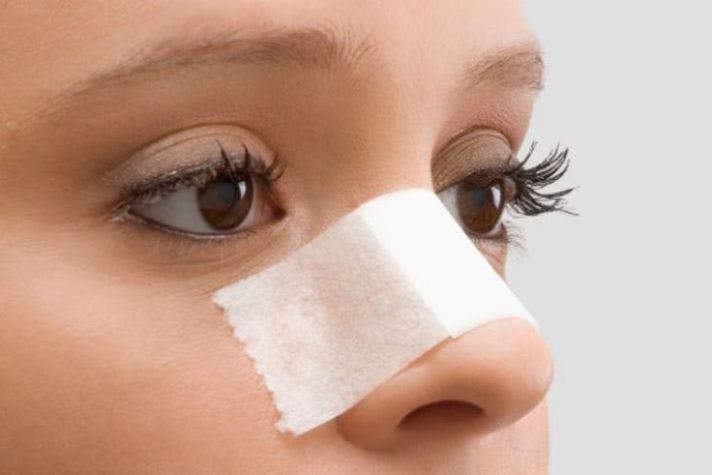Rhinoplasty’s evolution from medieval to modern
Despite its popularity, traditional rhinoplasty has its limitations. Tinkering away with standard tools such as rasps and chisels means it’s almost impossible to predict where the bones will break: even the most experienced surgeon cannot guarantee a perfect result! In traditional rhinoplasty, a revision needs to be done in about 5% of cases, a rate that is much higher than other branches of plastic surgery. Another drawback to traditional rhinoplasty? Recovery time. Patients’ downtime can last up to 3 weeks after the procedure. Today, traditional rhinoplasty can be viewed as a bit “medieval” considering the advanced technology that is available with sonic rhinoplasty.
"“Sonic rhinoplasty directly comes from piezosurgery technology.” - Dr. Gerbault"
So how does sonic rhinoplasty work? Sonic rhinoplasty is based on the principle of “piezoelectricity” or ultrasonic vibration. Piezo technology allows surgeons to cut nasal bones in a very gentle, precise and controlled way without destabilizing them. Surgeons can also release the skin from the bones. The fear of destabilizing the bones or causing them to crumble within the respiratory tract is thus eliminated.
The “cutting edge”: why sonic rhinoplasty is better
In terms of overall clinical outcomes, sonic rhinoplasty is simply the best option. The precision of sonic rhinoplasty means reduced trauma and almost no hematoma after the intervention, which translates into minimal postoperative effects for the patient. In the U.S., the entire procedure can be performed in an outpatient setting.
In terms of overall surgical technique, sonic rhinoplasty also requires less hand pressure, which means that the entire procedure is less tiresome for the surgeon. Surgeons are also able to easily correct nasal bone asymmetry since they can visualize the cartilaginous pyramid. If the bone needs to be broken, there is a total control of the fracture line, something that is almost impossible to predict in a traditional rhinoplasty procedure.
"“Sonic rhinoplasty allows surgeons to cut into the bones in a gentle and precise way, thus causing no destabilization.” – Dr. Gerbault"
Sonic rhinoplasty makes it possible to sculpt and remodel the bones, rather than breaking them. Consequences? Less trauma and less scarring for the patient, and a more refined result. Patients no longer have to fear the “fake” look that may result from post-surgical scarring. Another benefit: surgeons can even operate on brittle or thin bones, making this a great surgical tool for women and elderly persons.
Shattering the status quo: the future of rhinoplasty
Rhinoplasty is undergoing a revolution. The seeds of this renaissance started 20 years ago, with the creation of “open structural rhinoplasty” – a game-changer in the field of plastic surgery! As surgeons became skilled at exposing the key anatomical structures and reinforcing the nose with cartilaginous grafts, they felt confident that the re-designed nose would retain its final shape. They could tackle tough cases such as crooked noses, tip deformities or revisions of previous surgeries and produce elegant, natural results. In summary: open structural rhinoplasty paved the way for sonic rhinoplasty.
As rhinoplasty moves into the future, there are still many unexplored innovations to come. The main focus will be developing comprehensive approaches to repair the nasal respiratory system. While there is still a lot of research to be done, scientists and surgeons believe many respiratory problems can be solved thanks to rhinoplasty. In essence, cosmetic surgery will become synonymous with functional medicine for many with with nasal imperfections.
If you want to elevate your skills and offer patients the very latest in facial cosmetic surgery, register on Invivox. Learn how to perform sonic rhinoplasty or other advanced techniques, from experts in your field!

